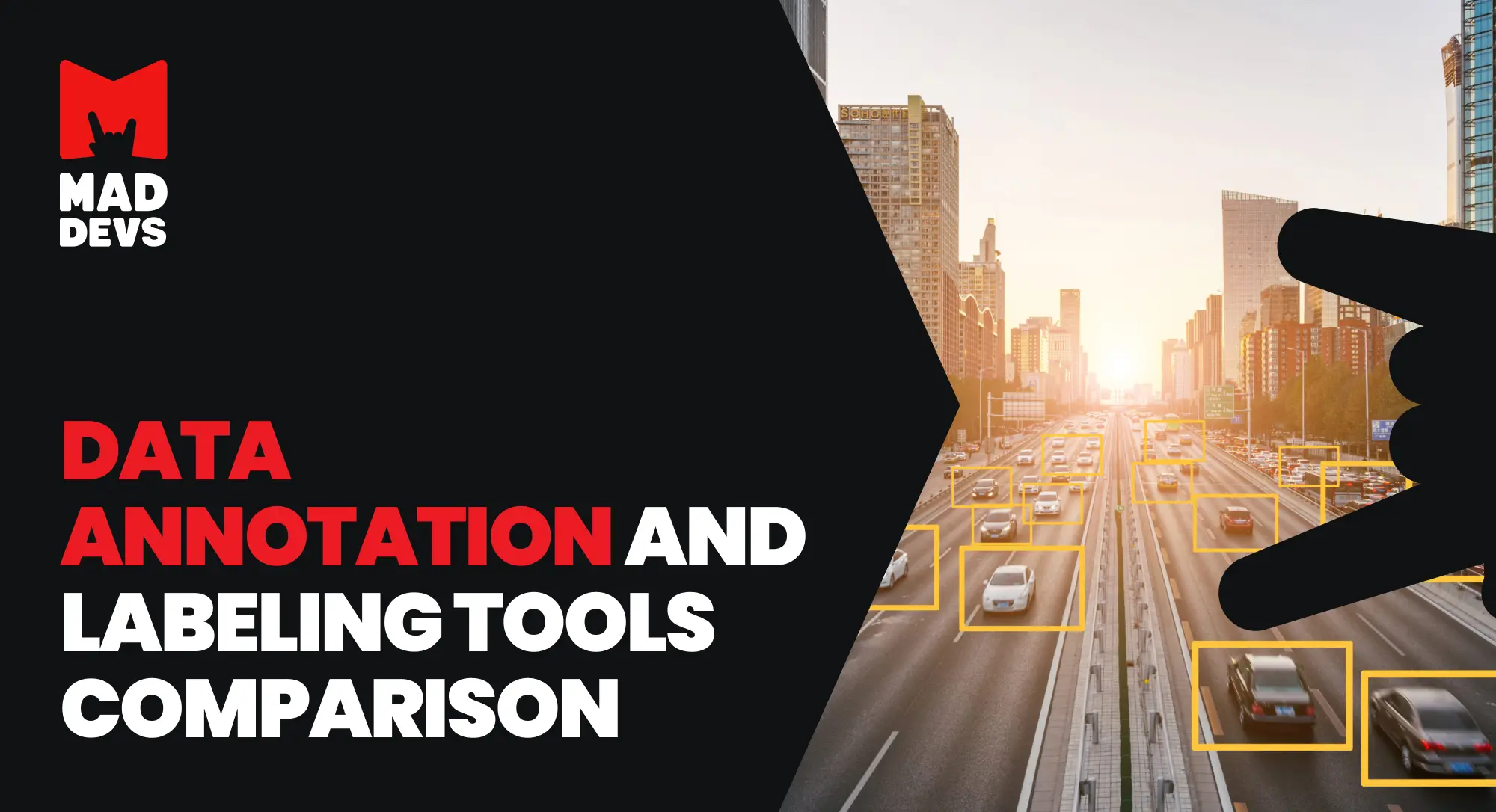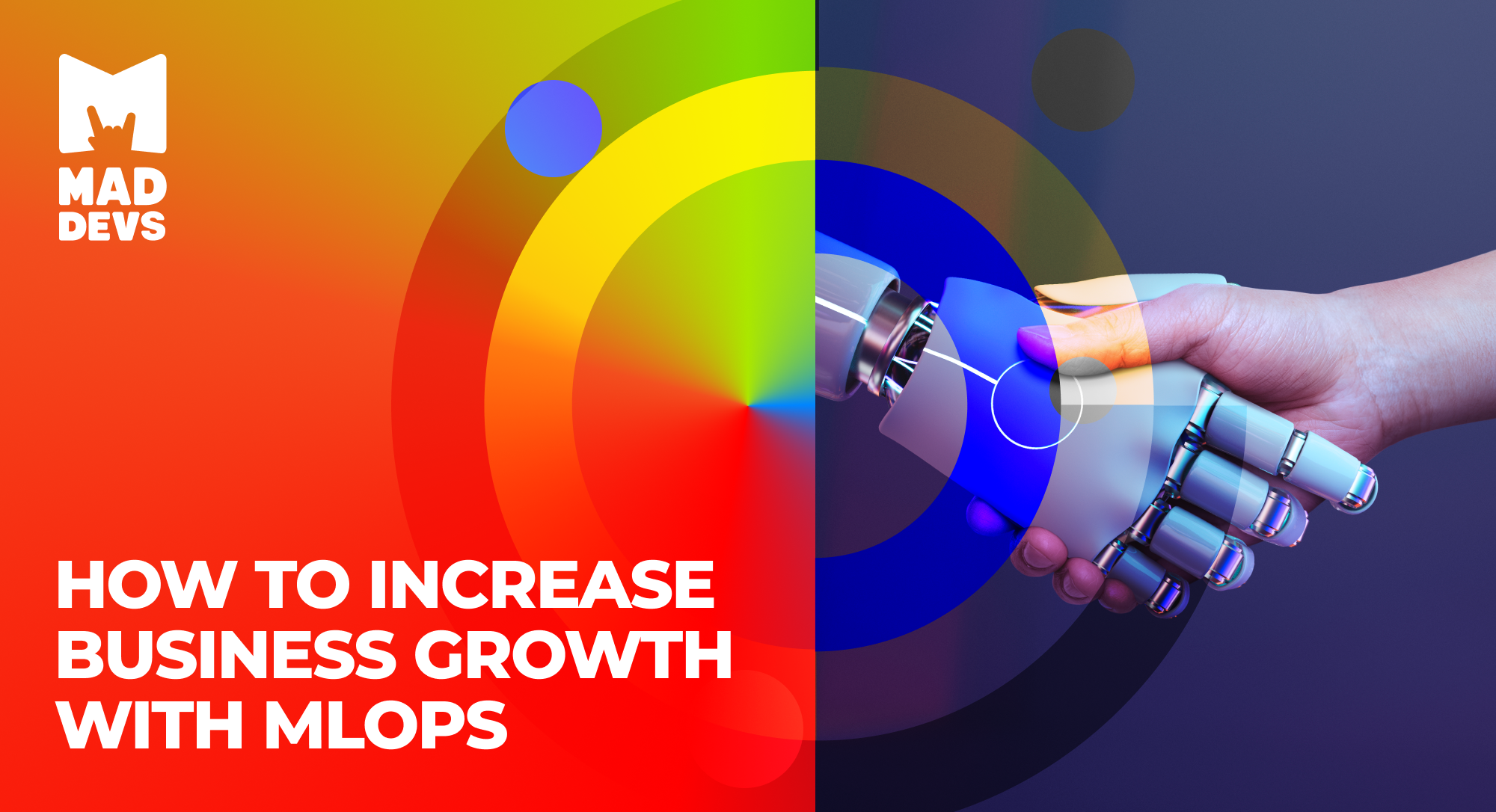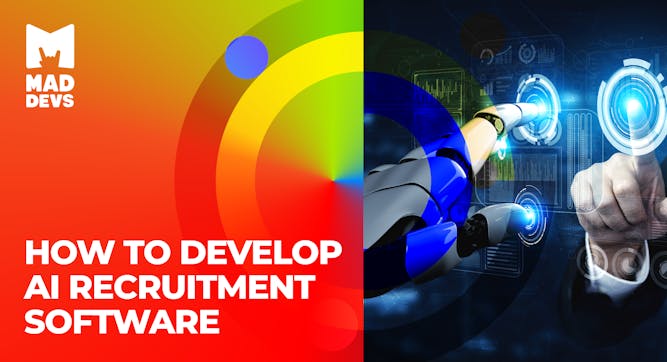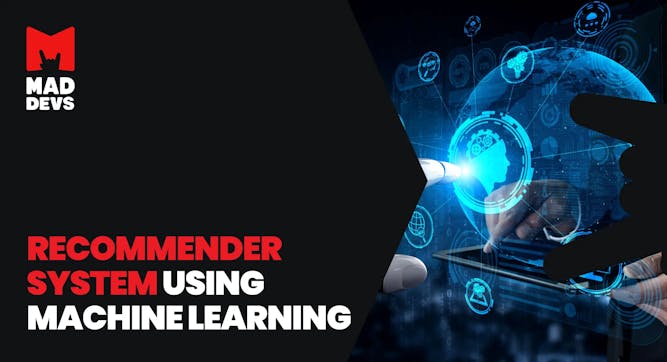Today, data is everything, so the best ways to collect, process and share it are critical. Edge computing in this context cannot be overestimated because it plays a key role in how we do it. Connected with other types of computing actively developing in parallel and often combined with it, we get improvements that make technologies develop faster and faster.
Especially when you consider that edge computing widely supports and distributes many other advanced technologies, such as IoT and AI/ML, that are changing our world on an even more fundamental level. All this together gives us confidence that the world will change beyond recognition over the next decade.
In this article, we will take a closer look at what edge computing is and what types of computing are developing along with it. How does edge computing work, what problems does it solve? And what technologies and entire industries are affected by edge computing? All this and more are in our article. Have a beneficial read!
Characteristics of edge computing
Edge computing is a way of handling data processing that revolves around working with information close to its source instead of depending on faraway data centers or cloud resources. It includes a variety of technologies and designs aimed at enhancing the efficiency of data processing by shortening the distance data travels before being processed.
Let's delve into the unique characteristics that make edge computing powerful:
1. Localized processing
Unlike the cloud, edge computing processes data closer to its source, leveraging geographically distributed platforms. This is ideal for sensor networks (think pipeline monitoring).
2. Proximity
With processing power located near the data source, users gain a valuable advantage: they can leverage network context information to make smarter decisions about how to utilize resources and services.
3. Mobility support
With the explosion of mobile devices, edge computing seamlessly communicates directly with them, enabling location-aware services like fog-based vehicle safety and edge-based disaster management.
4. Low latency
Edge computing minimizes delays by keeping resources and services local. This is crucial for resource-intensive applications like connected cars, remote health monitoring, and industrial control systems.
5. Heterogeneous ecosystems
Edge computing embraces diverse technologies. Different platforms, architectures, computing methods, and communication protocols can coexist within edge computing elements – end devices, edge servers, and networks, e.g.
6. Reduced bandwidth burden
It tackles bandwidth-intensive tasks like video analytics closer to the source (surveillance cameras, e.g.). This minimizes data sent to distant cloud data centers, ideal for processing videos or sensor data from remote locations in public safety applications.
In essence, edge computing brings the power of computation closer to the action, enabling real-time decision-making, mobility support, and efficient bandwidth utilization.
Edge computing architecture
Edge computing architecture primarily focuses on distributed computing resources across the network and includes three main components: edge devices, edge nodes, and the central cloud or data center.
- Edge devices, which generate data, can range from simple sensors to more complex machinery equipped with built-in processing capabilities. These devices form the outermost layer of the architecture and are responsible for collecting and transmitting data.
- Edge nodes are positioned near the data sources to provide localized data processing, storage, and decision-making. These nodes can take various forms, such as gateways, micro data centers, or specialized multiaccess edge computing platforms that enable seamless integration of different access technologies for optimized application distribution in real-time scenarios.
- The central cloud or data center handles large-scale data processing and analysis tasks. Even having a central cloud as the final layer, such distributed approach strikes a balance between local and central processing, accommodating the diverse needs of various applications.

Building an effective edge architecture requires careful consideration of two key aspects: infrastructure and data processing methods:
Infrastructure
Early edge computing involved building custom networks from the ground up. This meant establishing extended, non-cloud infrastructure and grappling with hosting complexities – on-premises, private cloud, containerization and so on.
Major cloud vendors and CSPs now offer pre-built edge computing services. These services, like AWS's comprehensive suite, cater to various use cases and extend the public cloud infrastructure to the network's edge. This allows organizations to swiftly set up local data centers in various cities, on-premises, or even within a 5G network. By leveraging these pre-built solutions, organizations can launch edge infrastructure quickly and efficiently.
Data processing
Choosing the right database is critical for edge computing success. Unlike traditional databases, edge-friendly databases require specific capabilities. Real-time processing is essential for immediate insights. Additionally, offline processing allows edge devices to function even when disconnected from the central network. Finally, seamless synchronization ensures smooth data flow across the entire edge architecture. Embedded databases are ideal for edge devices, enabling local data storage and resilience.
Edge computing phases
Edge computing architecture work unfolds in several phases, affecting overall system performance and responsiveness.
Data collection
Sensors, smart devices, or other equipment actively gather data from their environment, monitoring various parameters or exchanging information with other devices in the network. This stage is crucial for obtaining real-time insights.
Data preprocessing
Edge devices then perform preliminary processing on the collected data, applying filtering, aggregation, cleaning, or compression techniques. This step helps reduce data volume, retaining only the most relevant and valuable information for further analysis and ultimately saving bandwidth and resources.
Local analysis and processing
At this stage, data is analyzed and processed locally on edge devices or edge nodes. This could involve applying some machine learning algorithms, running more complex simulations, solving optimization problems, or carrying out other computational operations tailored to the specific application, all while maintaining low latency.
Decision-making and action
Based on the insights gained from local data analysis, the system makes informed decisions and takes appropriate actions. These actions might include managing devices, sending alerts or notifications, adjusting operational parameters, or initiating automated responses to specific conditions or events.
Sending data to the cloud
After local processing, some scenarios may require the processed data to be sent to the cloud for additional analysis, long-term storage, or integration with other devices and systems. This stage allows the system to leverage more powerful computing resources, enabling broader insights and facilitating data-driven decision-making.
As you can see, we have several additional phases that require more work to build and maintain such an architecture than more established solutions. It is about the differences with the established solutions that we will talk about further.
Edge сomputing is not the only approach. If we remember, edge computing is an extension of this technology, the first thing that comes to mind is well-known сloud сomputing. Also, if we ask what alternatives to edge computing exist, we have fog computing, which is an extension of edge computing but actively developing in parallel.

Edge computing vs. cloud computing
Talking about edge computing vs cloud computing it should be understood that they are closely related, and today it doesn't work without other. Their combination especially proves beneficial when real-time data processing along with centralized storage and advanced analytics are required, creating a balanced and efficient solution.
Their differences are based on where the data is processed. Edge computing processes data close to its source, minimizing latency and network overload. Conversely, cloud computing centralizes data processing in remote data centers, providing scalability and extensive storage. So edge computing is ideal for real-time applications, especially for industrial automation or smart vehicles. In contrast, cloud computing is more suitable for applications requiring huge computing power or complex analytics, such as big data processing or machine learning model training.
Edge computing vs. fog computing
Edge computing and fog computing are often overlapping concepts related to the distributed computing field. But despite their similarities, there are significant differences between the two approaches.
Fog сomputing extends the уdge сomputing concept by introducing an additional layer of processing nodes called Fog nodes. Fog nodes can perform a wider range of tasks than edge nodes, including more complex data analytics, advanced machine learning, security management, and network optimization. So fog nodes are part of a more extensive, hierarchical network that offers better scalability, resilience, and flexibility by distributing processing tasks across multiple network layers.
As the best practice, edge computing is ideal for applications that require low latency, real-time processing, and limited bandwidth. And fog computing is better suited where more complex tasks need to be performed or where many interconnected devices need to be managed. Applications where fog computing can be especially useful, include large-scale deployments of smart cities, advanced analytics for predictive maintenance, and huge autonomous vehicle systems.
Edge computing combined with other technologies
Due to its architectural features and strengths, edge computing is an excellent connection for many other technologies. This is especially true for technologies actively gaining popularity over the past few years, forming a new ecosystem of smart devices and applications. Edge computing is the missing element to tie them together and further accelerate their development. Let's take a closer look at the most important of these.
Edge computing and the IoT
Edge сomputing and IoT are two very interdependent technologies. However, do not confuse them with each other. IoT is a concept that describes the interconnection and exchange of data between physical devices connected to the Internet, while edge computing is an approach to distributing data processing that helps to process this data closer to the source to improve performance and reduce latency.
It is better to consider them as an ideal combination that creates a powerful ecosystem capable of transforming industries and improving how we interact with the world. This union holds immense potential for enhancing efficiency, responsiveness, and security in IoT systems. Below, we explore the technical aspects and benefits of their integration.
By the way, we have an excellent article about IoT, in which we talk in detail about what it is. Using our expert experience, we show how it is already being actively used in transportation and logistics, making transportation processes much more transparent, measurable, and efficient.
Reduced latency and improved responsiveness
Edge сomputing helps reduce latency by processing and analyzing data closer to the source, which is particularly crucial for IoT applications with real-time requirements. By enabling faster decision-making and action-taking, Edge сomputing ensures that IoT systems are more responsive and efficient, particularly in time-sensitive scenarios such as smart transportation, healthcare monitoring, and industrial automation.
Data preprocessing and filtering
IoT devices generate massive amounts of data, which may be redundant or irrelevant. Edge computing allows data preprocessing and filtering to be performed at the edge, ensuring that only valuable information is transmitted to the cloud or central servers for further analysis. This approach minimizes bandwidth usage and reduces the load on central processing resources, resulting in a more efficient IoT system.
Enhanced security and privacy
Edge computing improves security and privacy in IoT systems by enabling data to be processed and analyzed locally. This reduces the risk of data breaches during transmission and helps maintain compliance with data protection regulations. Additionally, by implementing advanced security measures, such as encryption and secure boot, edge computing ensures the integrity of both data and IoT devices.
Scalability
Integrating edge computing and IoT enables the development of scalable systems. As the number of IoT devices and the volume of generated data continue to grow, edge computing ensures that processing capabilities can be easily expanded or reconfigured to meet the changing demands of various applications and environments.
Energy efficiency and resource optimization
Edge computing increases energy efficiency in IoT systems by processing data locally, reducing the energy consumption associated with data transmission and central processing. Furthermore, edge computing enables more efficient use of resources by distributing the computational load across multiple edge devices.
Autonomous operation and resilience
The combination of edge computing and IoT technologies allows for the development of autonomous systems capable of functioning independently, even in the event of connectivity issues or central server failures. This resilience is particularly valuable in mission-critical applications, such as remote monitoring and emergency response systems, where maintaining uninterrupted operation is essential.
Device collaboration and distributed intelligence
The integration of edge computing and IoT enables devices to collaborate and share information in real time, fostering the development of distributed intelligence systems. This approach enhances the overall performance of IoT networks and allows for more efficient knowledge-sharing and cooperative decision-making.
Edge computing, data analytics, and AI/ML
The integration of edge computing, data analytics, and AI/ML technologies offers a powerful combination, providing unique capabilities and significant potential for growth and innovation. From a technical standpoint, their synergy leads to more efficient, intelligent systems capable of real-time decision-making and autonomous operation.

Data preprocessing and feature extraction
Edge computing facilitates data preprocessing and feature extraction, critical AI/ML algorithms components. By performing these tasks at the network's edge, close to the data source, edge computing ensures that only the most relevant and valuable data is sent to the cloud or centralized servers for further processing. This approach reduces the burden on network bandwidth and central processing resources, allowing AI/ML models to process larger volumes of data more efficiently.
Reduced latency and improved responsiveness
The distributed nature of edge computing significantly reduces latency and improves the responsiveness of AI/ML applications. By processing and analyzing data at the edge, AI/ML models can generate real-time insights and predictions, crucial for time-sensitive applications such as autonomous vehicles, smart grids, and industrial automation.
Enhanced privacy and security
Edge computing allows for data processing and analysis to be conducted locally, which helps to improve data privacy and security. AI/ML models can operate on sensitive data without it being transmitted to the cloud, reducing the risk of data breaches and ensuring compliance with data protection regulations. Moreover, edge computing can also facilitate secure AI/ML model training and deployment by employing advanced security measures, such as federated learning and encryption techniques.
Flexibility
The joint work of edge computing, data analytics, and AI/ML technologies enables the creation of flexible systems, changing their configurations in real-time learning the environment. This adaptability is particularly valuable in dynamic settings, such as smart cities or IoT networks, where the number of connected devices and the volume of generated data continuously grow.
Resource optimization and energy efficiency
Integrating edge computing with AI/ML allows for more efficient use of resources and improved energy efficiency. AI/ML algorithms can be used to optimize the allocation of computing resources across edge devices and nodes, ensuring that each component works the most efficiently way. Furthermore, by processing data locally, edge computing reduces the energy consumption associated with data transmission and central processing, contributing to the system's overall energy efficiency.
Distributed intelligence and collaborative learning
The combination of edge computing, data analytics, and AI/ML technologies enables the development of distributed intelligence systems, where AI/ML models can learn and collaborate across multiple edge devices and nodes. This approach allows for more efficient knowledge sharing and cooperative decision-making, ultimately leading to better overall performance and adaptability.
How can edge computing be used to improve sustainability
Edge computing isn't just about efficiency, it's a sustainability game-changer. By harnessing the power of edge computing, businesses and organizations can significantly reduce their environmental footprint and contribute to a greener future. Here's how edge computing empowers a more sustainable future:
Reduced waste. By analyzing data locally, edge computing enables immediate action. In manufacturing, this can mean sensors stopping unnecessary machine operation, saving energy and resources.
Lower energy footprint. Edge computing reduces reliance on centralized cloud servers, minimizing energy consumption for data transfer and processing.
Bandwidth efficiency. Processing data closer to its source keeps bandwidth usage in check, especially for bandwidth-intensive tasks like video analytics. This translates to less energy used for data transmission.
Sustainable remote work. Edge computing empowers remote work by ensuring critical operations can function even without a constant internet connection. This reduces commuting and its associated environmental impact.
Data security for a greener future. Distributed data storage and processing through edge computing improves data security. Less data breaches mean fewer environmental consequences associated with data recovery efforts.
Edge computing is a transformative technology that empowers businesses to embrace sustainability while maintaining optimal user experience and efficiency. It's a win-win for businesses seeking efficiency and a better future for our planet.
Edge computing use cases
Edge computing is transforming many industries where its strengths have long been lacking, even with the widespread use of computers per se. Given that edge computing is increasingly associated with the ever more actively developing technologies we discussed above, with its arrival in various industries, they change in several ways at once. Let's look at the entire set of industries in which the potential of edge computing is most obvious and significant.
Manufacturing and industrial automation
Edge computing supports Industry 4.0 by enabling real-time data processing for connected machines and sensors. This allows for predictive maintenance, reduced production downtime, and improved overall equipment effectiveness. Edge solutions also facilitate decentralized control systems, enhancing adaptability and resilience in manufacturing operations.
Healthcare
In healthcare, edge computing enhances remote patient monitoring, telemedicine, and medical imaging by processing data at the point of care. This reduces latency and improves diagnostic accuracy, enabling faster interventions and better patient outcomes. Additionally, edge computing supports securing sensitive health data, ensuring compliance with regulatory requirements.
Smart cities and infrastructure
Edge computing empowers smart cities with localized data processing for traffic management, public safety, and resource optimization. It enables real-time analytics for intelligent transportation systems, public surveillance, and environmental monitoring. This contributes to more sustainable and efficient urban environments, improving citizens' quality of life.
Transportation and logistics
Edge computing optimizes transportation and logistics by facilitating real-time fleet tracking, route optimization, and vehicle-to-everything (V2X) communication. These capabilities enhance fuel efficiency, ensure timely deliveries, and improve overall safety, transforming the industry into a more connected and responsive ecosystem.
Retail
In retail, edge computing enables advanced customer analytics, personalized marketing, and optimized inventory management. By processing data in-store, retailers can offer tailored recommendations, improve stock accuracy, and reduce checkout times. This enhances the shopping experience and drives customer loyalty and revenue growth.
Energy and utilities
Edge computing revolutionizes energy and utilities by providing real-time monitoring and control of energy grids, optimizing load balancing, and enabling demand response management. It also supports the integration of renewable energy sources and energy storage systems, contributing to a more sustainable and efficient power infrastructure.
Agriculture
Edge computing plays a crucial role in precision agriculture, enabling real-time monitoring and analysis of various factors like soil conditions, weather patterns, and crop health. By processing data at the edge, farmers can make timely irrigation, fertilization, and pest control decisions, ultimately increasing crop yields and reducing resource waste.
Telecommunications
In the telecommunications sector, edge computing helps manage network traffic more efficiently and supports deploying advanced applications like augmented reality, virtual reality, and real-time gaming. By processing data closer to the end-user, network latency is reduced, and user experience significantly improves.
Financial services
Edge computing supports the financial sector by enabling faster and more secure processing of transactions, risk analysis, and fraud detection. By analyzing data at the edge, financial institutions can make better-informed decisions, enhance security measures, and comply with regulatory requirements, ensuring a more robust and efficient financial system.
Entertainment and media
In entertainment and media, edge computing enables content delivery networks (CDNs) to provide high-quality streaming experiences with reduced latency. It also supports real-time processing of user data, allowing for personalized content recommendations and targeted advertising, ultimately driving user engagement and revenue generation.
Future of edge computing
The future of edge computing looks promising, with widespread adoption predicted across various industries like agriculture, transportation, and logistics. This growth will fuel demand for specialized hardware like edge servers and sensors, forming the backbone of this powerful technology.
The rollout of 5G networks acts as a perfect accelerant for edge computing. Ultralow latency and ultrafast speeds will revolutionize data processing and transmission at the edge.
Additionally, edge computing aligns perfectly with AI applications. By enabling real-time data analysis, edge computing paves the way for the growth of edge AI, opening doors to powerful on-the-spot decision-making.
Summary
As you can see, the world has great potential to change for the better and much faster than it might seem at first glance. Today, not only do we have vast amounts of information, but we are rapidly improving how we collect, communicate, and process it, enabling us to make even more profound data-driven decisions.
We at Mad Devs see these changes from the inside as we directly participate in them, helping advanced technologies become more widespread and businesses more efficient.
And if you want to learn more about how Mad Devs can help automate your business using best practices and the highest standards, sign up for a free consultation with us. We will individually consider your case and offer you the most effective and profitable solutions.










